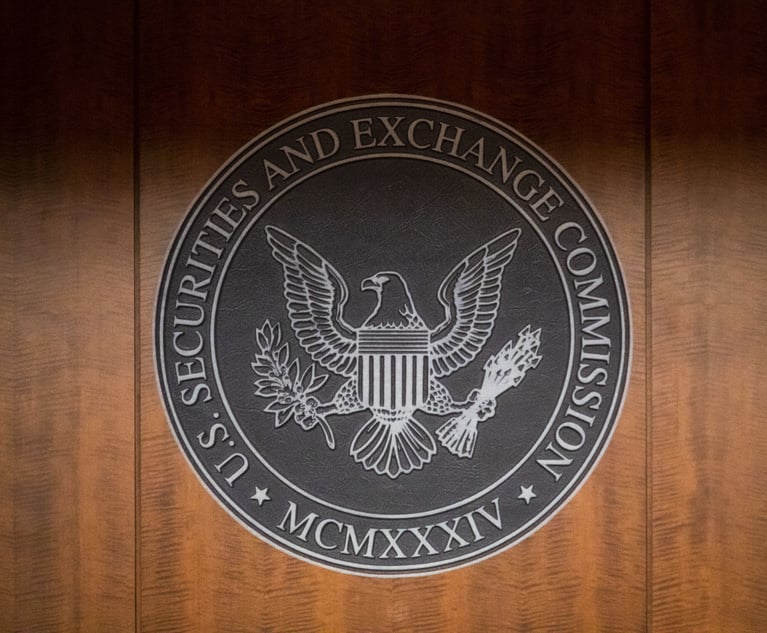July 24 (Bloomberg) — Trading surges that temporarily boostedthe value of credit derivatives held by JPMorgan Chase & Co.may provide clues about whether traders at the bank masked lossesthat have spiraled to $5.8 billion.
|Spikes in late January and again at the end of February, whichmore than doubled the volume of trades in an index tied to thecreditworthiness of companies, lowered the cost of the index,raising the value of the bank's holdings. The surges came justbefore end-of-the-month bank audits to verify prices.
|The trading patterns offer a road map for investigators afterthe biggest U.S. bank by assets restated first-quarter earnings toaccount for a larger loss on the derivatives than previouslydisclosed. JPMorgan, which shut the London-based groupresponsible for the trades in its chief investment office, said aninternal probe found evidence, without providing specifics, thatemployees may have tried to hide losses.
|“That's a huge red flag,” Craig Pirrong, a finance professor atthe University of Houston in Texas whose research focuses onderivatives markets, said in a phone interview about the bank'scomments on the integrity of how the holdings were valued. “Itcould open a Pandora's box.”
|Investigators will want to look into whether traders tried tomanipulate the price of an index to boost the value of holdings,said John Coffee, a securities-law professor at Columbia UniversityLaw School. Such actions resemble what's called “painting thetape,” in which a trader engages in “purchases that are motivatedonly by a desire to influence a price in a thin market,” he said.Prosecutors and plaintiffs' lawyers would need to prove intent,Coffee said.
|IG9 Position
|Because JPMorgan had amassed such large positions in the MarkitCDX North America Investment Grade Index Series 9, known as IG9,even a small change in prices could generate a big difference inthe value of the trades.
|JPMorgan said July 13 that the internal review raised questionsabout the integrity of prices the chief investment office used tovalue its positions in credit derivatives, insurance-likeinstruments in which sellers agree to cover losses if the debtthey're linked to defaults. The bank said it adjusted prices usedat the end of March, leading the New York- based bank to reducefirst-quarter net income by $459 million.
|“E-mails, voice tapes and other documents, supplemented byinterviews” were “suggestive of trader intent not to mark positionswhere they believed they could execute,” the bank said in apresentation July 13 as it reported second-quarter net income thatfell 9 percent to $4.96 billion. “Traders may have been seeking toavoid showing full amount of losses.”
|Double Volume
|The U.S. Justice Department and Federal Bureau of Investigationin New York started a probe of the trading losses in May, a personfamiliar with the matter said at the time. Regulators from theSecurities and Exchange Commission also are reviewing trades thatled to the losses.
|Jennifer Zuccarelli, a spokeswoman for JPMorgan, declined tocomment on the trading pattern or strategy.
|Volumes in the IG9 index, which tracks credit swaps tied to 121companies, all of which were investment grade more than four yearsago, surged in the three days ended Jan. 27 to twice the average,Markit Group Ltd. data show. More than $19 billion of the indexchanged hands in 184 trades from Jan. 25 through Jan. 27. Theaverage daily volume of $6.4 billion in that period is double the$3.3 billion during the first quarter, the data show.
|The cost of protecting against default on the index dropped 6.7basis points in the period, raising the value for those likeJPMorgan that had sold insurance, even as a more recent and widelyused version of the index fell by just 3.6 basis points. A basispoint, or 0.01 percent, equals $1,000 annually on a contractprotecting $10 million of debt. The data don't identify which firmsare making the trades.
|February Surge
|In the last two days of February, trading volumes againballooned to twice the quarterly average, fueling a 5-basis-pointdrop in the index even as the more active benchmark fell 1.4,Markit data show.
|As the cost of default insurance on the IG9 index fell,JPMorgan's position benefited. Similar to how the price of a bondrises when yields on the debt falls, the value of a credit swaprises for traders who sell protection when the premium on thatcontract declines.
|An internal control group at JPMorgan verifies all prices acrossthe bank's trading businesses at the end of each month and quarter,according to three former chief investment office executives and asenior executive in market risk. Bloomberg News, citing peoplefamiliar with the matter, reported May 30 that the office wasvaluing some of its trades at prices that differed from those ofits investment bank, the biggest swaps dealer in the U.S.,potentially obscuring by hundreds of millions of dollars themagnitude of the loss.
|London Whale
|At the center of the trading was Bruno Iksil, a French-borntrader in London who ran the credit-derivatives book that generatedthe losses. He came to be known as the London Whale because thesize of his bets grew so large. When market-makers asked Iksil howmuch he wanted to trade, he implied he was able to handle as muchas they liked, according to two people with direct knowledge of thetrading who asked not to be identified because the interactions areprivate.
|“This guy definitely had a substantial influence on the market,”David Kelly, director of financial engineering at New York-basedCalypso Technology Inc. and a former manager of counterparty riskat JPMorgan, said in a phone interview. “Window dressing your bookat the end of the month or year is certainly nothing new.”
|'Nothing Wrong'
|No regulators or prosecutors have accused Iksil or other tradersin the group of wrongdoing.
|Iksil, who no longer works at JPMorgan, hasn't commentedpublicly on the trading loss and didn't return phone calls. Hislawyer, Raymond Silverstein, said in an e-mail that Iksil“considers he did nothing wrong and will cooperate fully with theauthorities.”
|While trading data don't show how much of the surge was causedby JPMorgan, the bank had amassed a position in the IG9 index thatmay have been as much as $100 billion, Bloomberg News reportedApril 5, citing traders outside the firm who said they based theirestimates on trades and price movements they witnessed as well astheir understanding of the size and structure of the market.
|Credit Swaps
|In the 14 weeks ended April 6, outstanding bets on the indexusing credit swaps rose an unprecedented 65 percent to $148.2billion, according to the Depository Trust & Clearing Corp.,which runs a central registry for the market.
|Dealer positions in IG9, or the amount of protection they soldless what they bought, jumped 28 percent in the week ended Jan. 27to $28.5 billion, according to the DTCC. JPMorgan is the only oneof the six biggest U.S. banks to have sold more protection oninvestment-grade companies than it bought, data compiled by theFederal Reserve through the end of March show.
|JPMorgan said July 13 that it ousted managers responsible forthe transactions and would claw back their pay. The company didn'tname the managers.
|Chief Executive Officer Jamie Dimon said last month that thegroup's credit-derivatives bets initially were intended as a hedgefor the bank against a financial crisis or economic slump.Executives ordered the chief investment office to pare thosepositions at the end of 2011, before tougher capital rules were setto kick in. Instead, the team started executing trades intended tooffset the hedges, including selling protection on IG9 largelyusing contracts set to expire in December 2017, market participantshave said.
|Bigger Exposure
|The net amount of credit-derivatives protection JPMorgan sold oninvestment-grade companies using contracts expiring in more thanfive years doubled to $101.3 billion in the three months endedMarch 31, according to Fed data.
|After the bank's initial bets, the largest trades typically cameat month-end, Markit data show.
|The trades starting in January left the bank with even biggerand harder-to-manage exposures, Dimon, 56, told the Senate BankingCommittee last month. The group “embarked on a complex strategythat entailed adding positions that it believed would offset theexisting ones,” Dimon said in June 13 testimony.
|JPMorgan cut its positions in IG9 by 70 percent through July 13,and the bank transferred about $30 billion of risk- weighted assetsto the investment bank from the chief investment office, an amountthat is “down substantially” from the peak and back to levels atthe end of 2011, Dimon said.
|Losses on the botched trades in the first two quarters grew to$5.8 billion, and the bank could lose an additional $1.7 billion,he said.
|JPMorgan “would love to say that this was all done by a rogueemployee” and that the bank was the victim, said Coffee, theColumbia securities-law professor. At the same time, “if he wasmanipulating the price, he was an authorized person of JPMorgan,and they could be held vicariously liable for what he's doing,” hesaid.
|Copyright 2018 Bloomberg. All rightsreserved. This material may not be published, broadcast, rewritten,or redistributed.
Complete your profile to continue reading and get FREE access to Treasury & Risk, part of your ALM digital membership.
Your access to unlimited Treasury & Risk content isn’t changing.
Once you are an ALM digital member, you’ll receive:
- Critical Treasury & Risk information including in-depth analysis of treasury and finance best practices, case studies with corporate innovators, informative newsletters, educational webcasts and videos, and resources from industry leaders.
- Exclusive discounts on ALM and Treasury & Risk events.
- Access to other award-winning ALM websites including PropertyCasualty360.com and Law.com.
*May exclude premium content
Already have an account? Sign In
© 2024 ALM Global, LLC, All Rights Reserved. Request academic re-use from www.copyright.com. All other uses, submit a request to [email protected]. For more information visit Asset & Logo Licensing.







